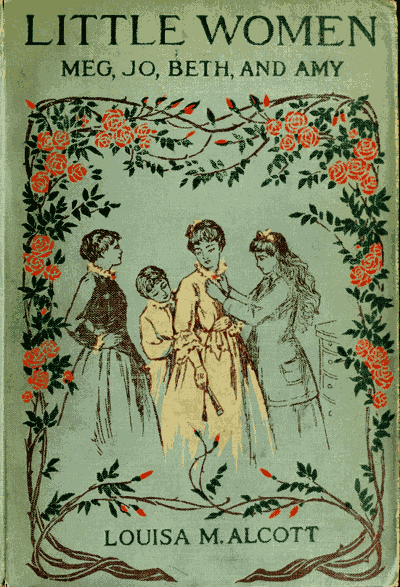Therefore - as you can probably guess - I appreciated Little Women much more than its retelling. While March focuses on the tragedies of slavery and is indeed interesting, it skews the reader's original perception of March and his family. Rather than seeing the sensible father the March daughters all look up to, we see a man who has trouble controlling his own feelings and can't seem to let go of his past. That was his main problem. Yes, March faced great challenges. Yes, he deserves the ability to morn the past. But that does not give him the right to give up on the future. He had a willing, humble family standing right before him, yet all he could do was wallow in the agonies seen from his eyes. Why remain stuck in the past when you have others who rely on you for guidance? Sometimes we need to let go of our wandering emotions just long enough to help those people who still need our help. I also admire Little Women for the wonderful character development within it. The audience got to know all of the girls one on one, discovering that all of them were unique in their own way. While filled with a few tear-filled moments, the novel was a beautiful piece of writing that showed how a poor family of four daughters was able to form ties of friendship and love that would bond them together forever, even in death. It was heartfelt and very easy to get to know the characters.
March establishes its own story line through the father of the March family. In Little Women, March is absent for about half of the novel and when he returns, he is not mentioned very much. Therefore, through March, we are able to see just what the father of the March family was doing all of that time. Because of my "curious self" and need for explanation in situations like that, I welcomed March into my hands, thrilled to finally discover the secret life of Mr. March. Now that I have actually read it, I can say that it wasn't perfect, but overall, I rather enjoyed this addition to the original story line. I do believe it has literary merit, as it was created in order to fill in the gaping holes that March left from his absence within Little Women. I appreciated the fact that Brooks took a small hole within one classic plot line and expanded her own ideas into it and allowed the new, run-off story to enrich the feel of the original. Throughout the two books, there are objects and scenes that come together on common ground while at the same time, two completely different stories were being woven together into one. Although both have contrasting flows, I accept them as almost one, unified story line. The events within them explain the gaps that one author or the other left to our imaginations. The story of the four daughters somehow intertwines with the story of the father to form a solid plot line, and that's something that is hard for two completely different authors to do with two very different books.
I really did enjoy these two books throughout the summer. Each of them is unique in its own way, and their stories flowed along with such interesting events that I just had to keep on reading. I really do love those books - the ones that you can't seem to put down. They just prove that reading is truly a gift in this world, and without it, we would probably be bored out of our minds! Little Women and March were a perfect choice for my reading homework, and I'm so glad that I decided to try them out. Well, that concludes my blog posts for the summer! To be continued once school starts back up! :)




